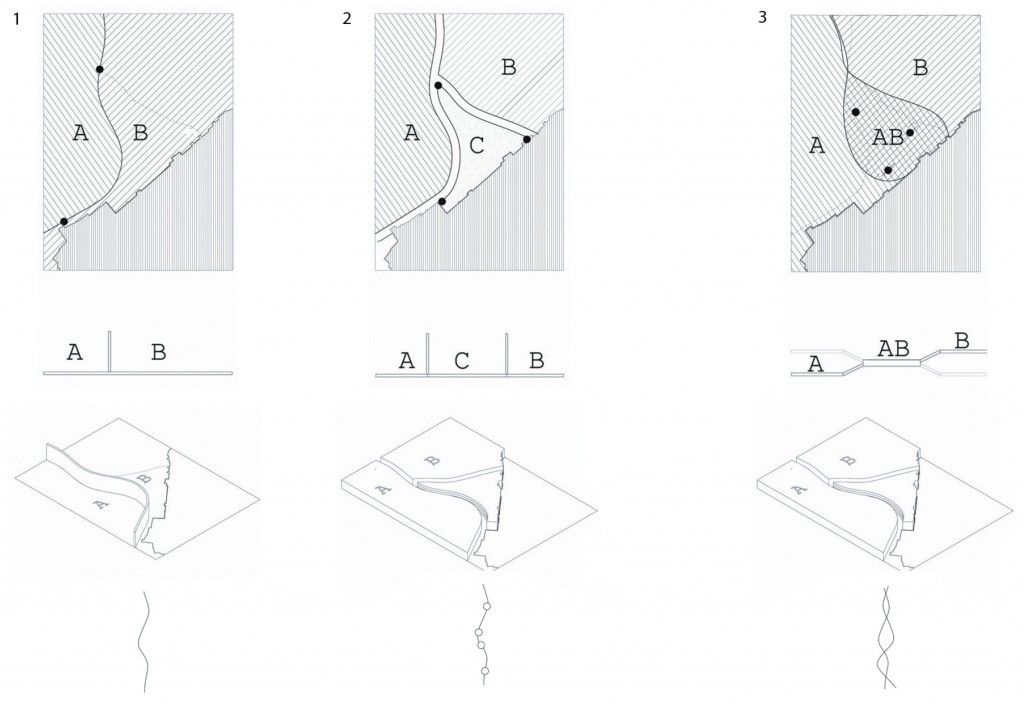What is RESOLUTION PLANNING?

The title we gave to the approach and practice we have been shaping for over 5 years. It means using tools and observations from the world of architecture and design and applying them to conflict resolution processes.
How does it work?
A good example can be learned from specific geography and history- in this case, Jerusalem.
One evening in 1948, on the dusty floor of a deserted house in the Musrara neighborhood of Jerusalem, two colonels spread a city map to draw a new demarcation line following the recent war. The Israeli colonel, Moshe Dayan, and the Jordanian, Abdallah-a-tel, used red and green pencils to mark the Israeli and Jordanian borders. Their crude, three to four millimeter wide pencil marks created actual buffer zones some 60 to 80 meters wide. These vast buffer zones quickly became empty “no man’s lands” prohibited to both sides, scarring the heart of Jerusalem. Although this action was perhaps deliberate, a better understanding of the relationship between planning and conflict resolution could generate a better arrangement than a buffer zone scaring the heart of Jerusalem for almost 20 years.
The Jerusalem story is a good example for the resolution planning approach, not only because of the 1949 anecdote, but also in regard to the future of the city: Since 1967, Jerusalem has officially been a united city. However, in reality it has remained divided for decades. A clear mental line still separates the East from the West, and Arab settlements from Jewish segments. This division is present in the city’s physical layout, as well as in its daily routines. The “security fence,” or “separation wall,” recently erected in the city has failed to reconstruct a notion of unity within its controversial boundaries.
There have been numerous attempts to solve the issue of division in Jerusalem, mostly in the context of a two-state solution. Many of these attempts have proposed the placement of a clear border to demarcate a desperately needed boundary between Israeli and Palestinian sovereignties. These solutions are based on a vision of the city in which urban separation, when mutually agreed upon, and when implemented correctly, could be a positive and liberating basis for the peaceful co-existence of two capitals, Yerushalayim and Al-Kuds. The solution holds political meaning in a suit of urban planning. Resolution planning is all about this hybrid.
A close examination of one area of the future border in Jerusalem reveals the implicit connections between architecture, planning, and policy that form the components of Resolution Planning. In order to approach a complex challenge like a final status agreement in Jerusalem, the architect must think as a policymaker, while the policymaker must use planning tools to achieve a sustainable solution. Since 1967 the seem line- once the no man’s land buffer zone has been part of an invisible, yet highly present, boundary between the two sides of the united city. For over four decades, and despite its enduring importance as a major part of the city, the seam line still protests with its vacancy, stubbornly remaining empty and devoid of function. The seam line embodies Jerusalem’s border challenges and provides an opportunity to evaluate the potential effectiveness of various policies.
How should urban planning address an uncertain future? How can planners provide a sensitive solution that will ensure ongoing adaptation in support of peace in a separated city? We address the answers to these questions as Resolution Planning.
We introduce Resolution Planning as an initial “toolkit” designed to imagine and confront the future realties of the city. Peace agreements may leave borders open to interpretation. Prior to that point, creative policy and planning should step in to reinforce the peace. Working jointly, policymakers, designers and planners can offer innovative tools and feedback to the governments for achieving a feasible, sustainable realization of written peace agreements. Applying the Resolution Planning approach in Jerusalem may help this city win back its vitality and peace, and progress from a city bounded by unity to a city liberated by separation.




